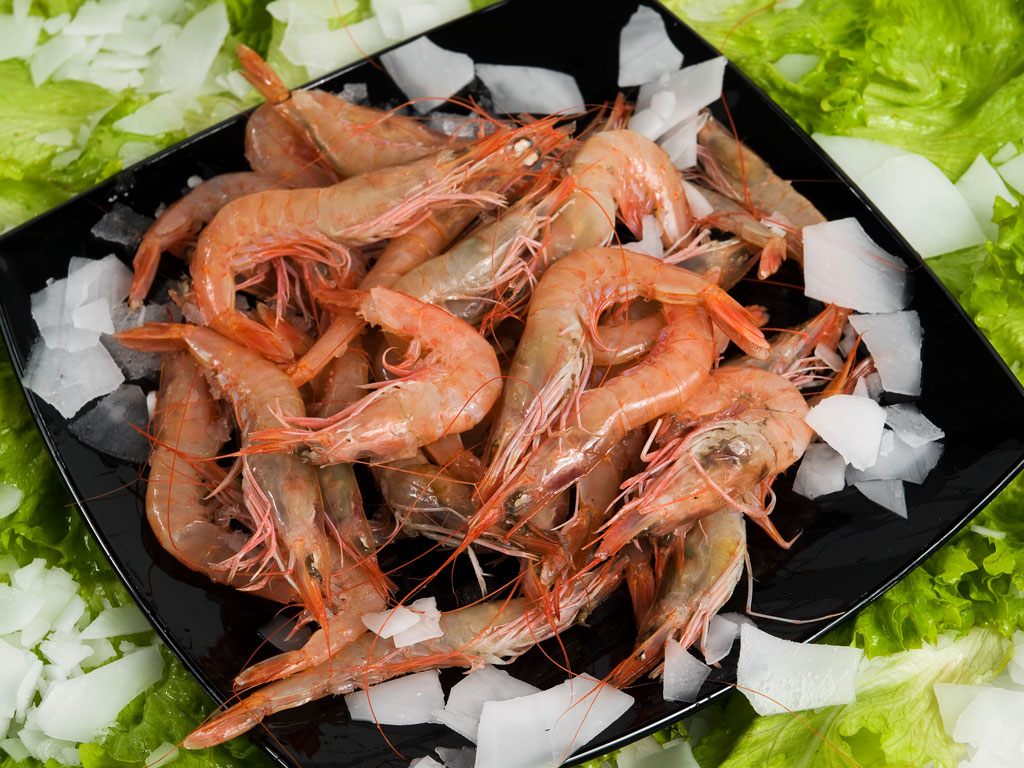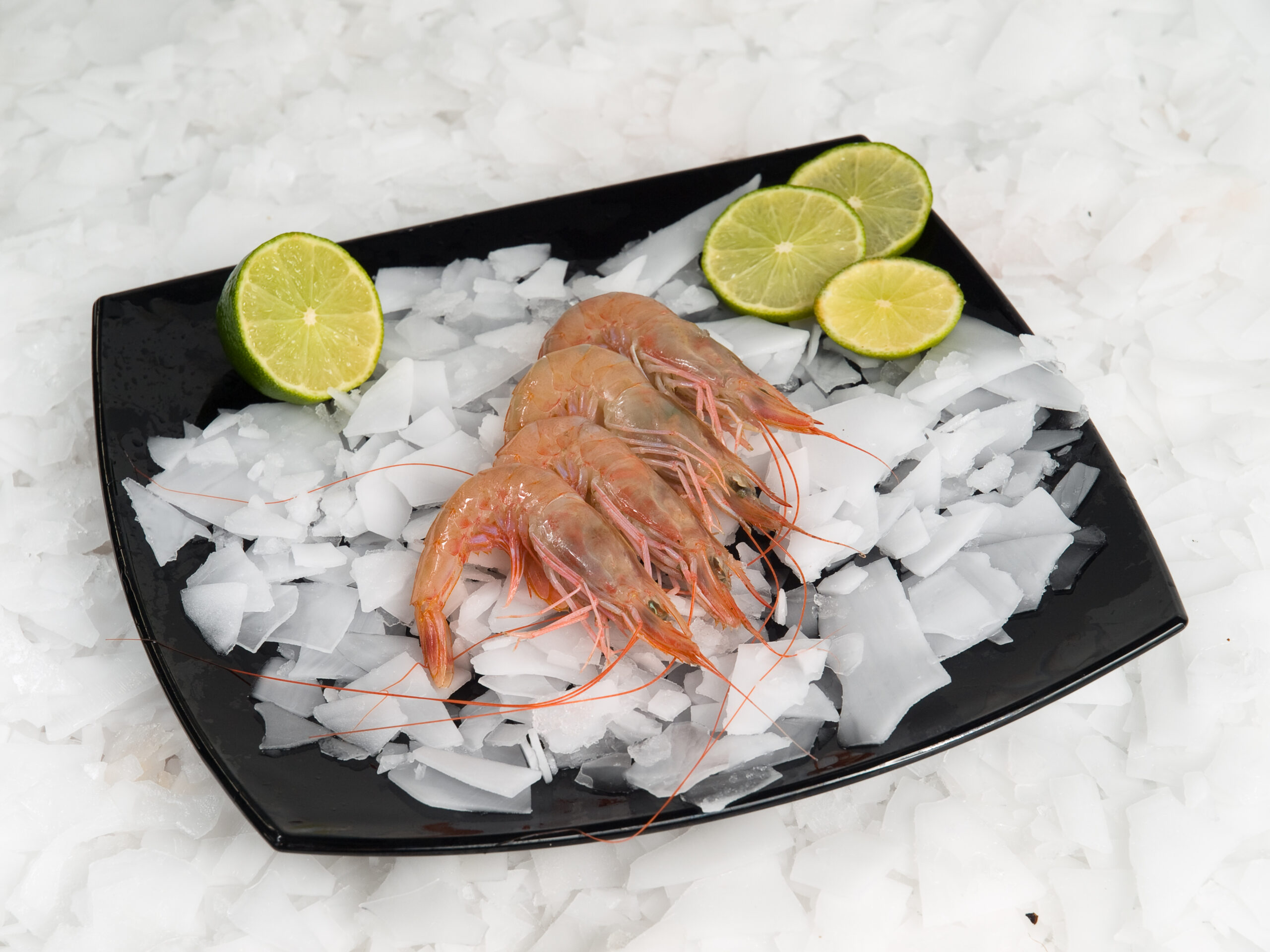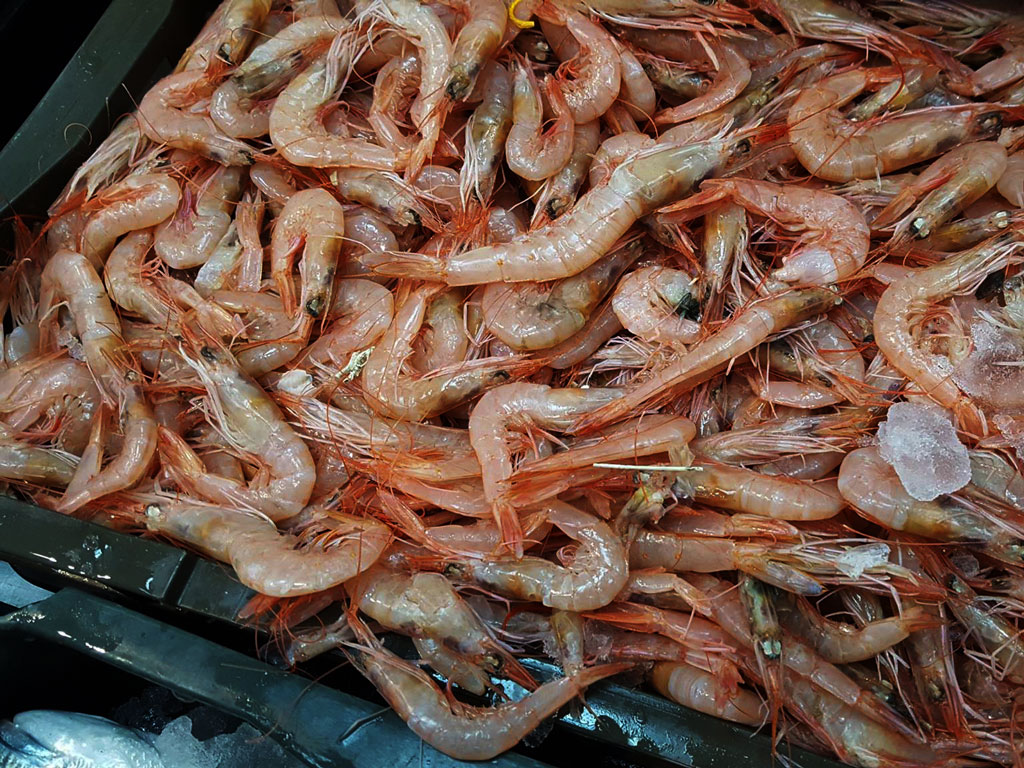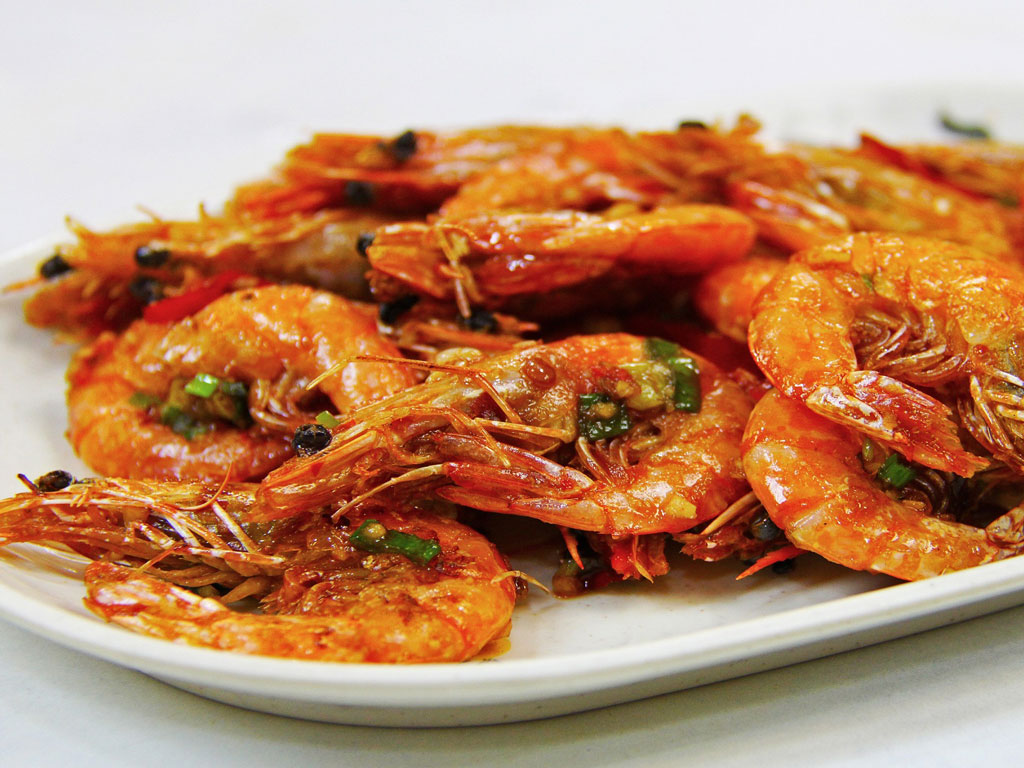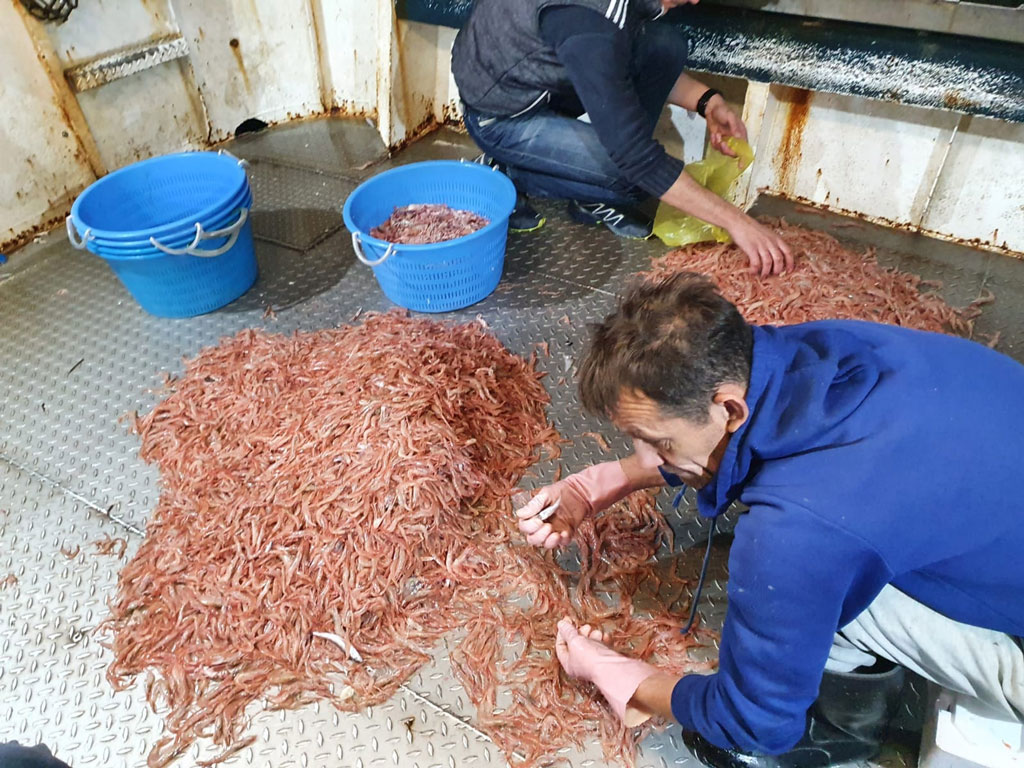
Prawns
lat. Parapenaeus longirostris
Prawns
There are many types of prawns but the most common ones in our area and Mediterrannean diet is deep-water rose shrimp (lat. Parapenaeus longirostris).
It’s greyish pink in color, sometimes green and even dark brown. While alive, its body is streaked with brown spots. It feeds on small, benthic organisms. It lives on sandy and muddy bottom up to 500m deep. During the day it is burried in the sediment.
According to gastronomic historians, prawns were consumed during the antique period and had been prepared in may ways.
Tha name itself originates from the 14th century from english ”shrimpe”, german ”schrempen” and old nordic ”skorpna” which means to wrinkle. Its body is made out of joints that overlap in a row what feels like they are wrinkling. Prawns are in a class of Malacostraca and just like the other members of this class they have simple body, small carapace that comprises the head and the thorax, muscular abdomen for swimming and thin, light outer skeleton.
Energy value of 100g of fresh prawns is 85 kcal/356 kj of what 0% are carbohydrates, 0.51 % is fat and 20.1% proteins.
Minerals contained in prawns : calcium (54 mg what makes 7% of RDA), magnesium (22 mg what makes 6% of RDA), phosphorus (244 mg what makes 35% RDA), zinc ( 1 mg what makes 10% RDA), copper (0.2 mg what makes 20% RDA) and selenium (30 mcg what makes 54.5 % of RDA).
Vitamins contained in prawns: niacine (1.8 mg what makes 11% of RDA), vitamin B6 (0.16 mg what makes 11% of RDA), panthothenic acid (0.3 mg what makes 5% of RDA), vitamin B12 (1.1 mcg what makes 44% of RDA), folic acid (11.4 mcg what makes 6% of RDA, vitamin A(24 mcg what makes 7% RDA).
Other nutrients present in prawns are omega 3 fatty acids (0,03 g EPA and 0.031 g DHA).



